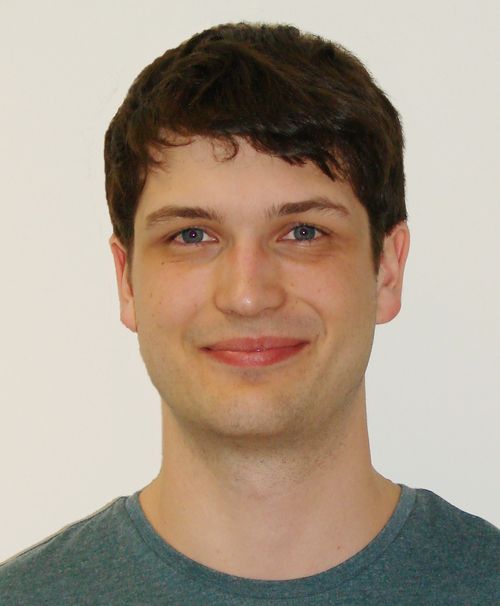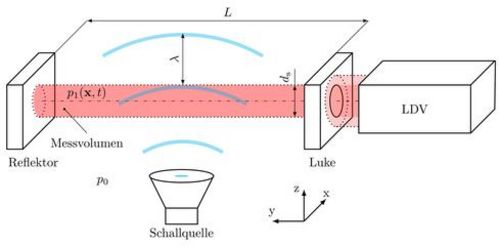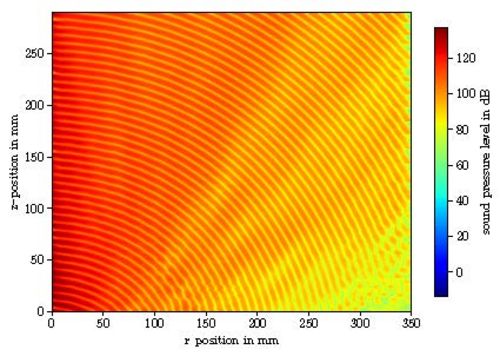
At the Institute for Measurement Technology a measurement setup based on the Radio Acoustic Sound System (RASS) is in development. This setup allows the contactless and spatially resolved measurement of the temperature of gases. This is achieved by determining the velocity of a sound puls at different positions by a Doppler radar. The sound field is generated using a loudspeaker at a frequency of 22.9 kHz. In this work the sound propagation of the tweeter GZCT 0500X is determined by means of interferometric pressure measurement using a Laser Doppler Vibrometer (LDV).
 Figure 1: Sketch of the measurement setup
Figure 1: Sketch of the measurement setup
First, the acoustic and optical principles necessary to describe the relationship between pressure fluctuation and optical path length are introduced. The utilized principle only allows to measure the average pressure along the measurement path. Therefore, in order to find the localized pressure values, a tomographic reconstruc tion is required. For this purpose, three different methods are presented and com pared in terms of their accuracy and computational complexity.
In order to calibrate the measurement setup, an additional setup was devised. Using a pneumatic cylinder, sinusoidal pressure fluctuations are generated and impressed into a cuvette through which the laser beam of the LDV passes as well. Subsequently, the interferometrically determined pressure values were compared with the values of a pressure sensor. The resulting deviation was used as corrective term.
The undisturbed rotationally symmetric sound field of the tweeter at 22.9 kHz was scanned and reconstructed using filtered back projection. The such determined sound pressure values show a high level of agreement with those gathered via a reference microphone positioned above the laser beam. However, to achieve satisfying results, the precise alignment of the tweeter’s central axis of the sound field with respect to the scan is crucial, as any deviation may cause considerable reconstruction errors.
Finally, the influence of a wire grid on the sound field was investigated. To obtain a simple model of a grid, the reflection factor on an infinitely extended cylinder was calculated. The grid’s influence on the sound waves in the nearfield proved to be minor if the wire diameter is small compared to the wavelength. The validity of the usage of the grid model was tested by measuring the sound field after its passage through the grid. This showed no notable differences to the undisturbed sound field.
 Figure 2: Reconstructed sound field of the tweeter GZCT 0500X
Figure 2: Reconstructed sound field of the tweeter GZCT 0500X
Keywords: refractometric tomography, sound field, tweeter, interferometric pressure measurement, filtered back projection
April 4th, 2018